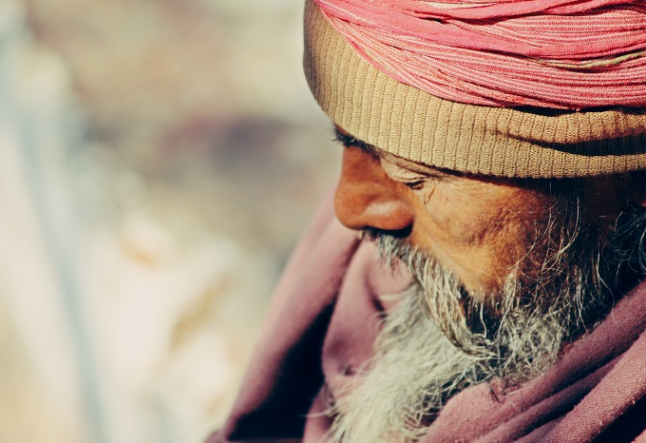Vow of silence, why do monks take it?
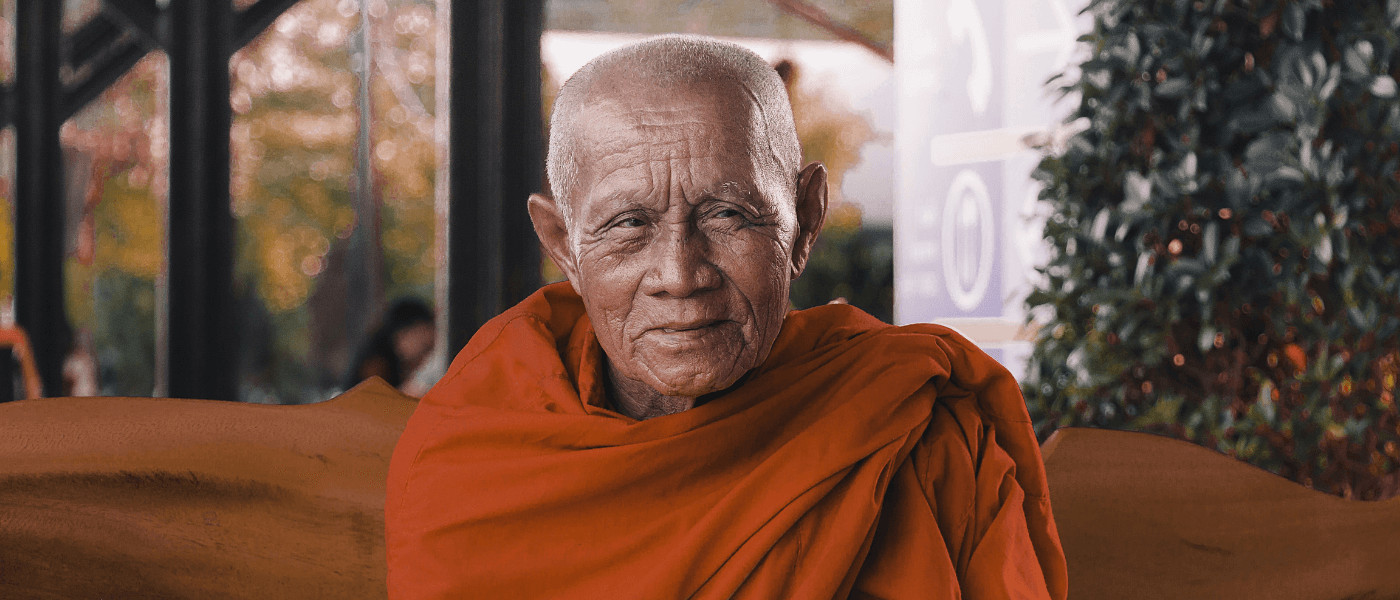
Is speaking with silence a real thing?
Have you thought about all the ways monks seem to be at peace?
Could it be the absence of words and vow of silence?
Today, few of us are part of a monastery, and unlike a monk’s vow of silence, everyday life hardly allows us to avoid speaking.
While talking to the people in our daily lives is something we often must do, we can still tap into our spirituality by learning from the monk’s tradition of taking a vow of silence without joining a monastery or carrying a staff.
Thoughts have control; silence has power
Because communicating with one another is essential to our lives as social beings, much of our conscious upbringing focuses a lot on language learning.
It is easy to overlook how important it was for us to learn to name objects, places, and things and imitate the voice of those nearest to us.
Our social identification determines much of our learned sense of self as a person physically in a particular place, instead of our innate nature as spiritual beings, with an understanding of self that existed before we learned to think with our brain through words.
In this article, we will uncover the meaningful process of The Vow of Silence, practice often associated with the silent order of monks:
- What is the Vow of Silence?
- Why do people take a Vow of Silence?
- How to practice a Vow of Silence, , adhering to the vow of silence rules?
- Common Questions about taking a Vow of Silence.
People who meditate can experience the distinction between Being and Thinking by contrasting the initial and experienced sense of self. Being is spatial, as we sense everything at once, consciousness without language.
Thinking is more than simply speaking with silence, however.
Our thoughts are a sequential, time-bound string of words, most times coming from the brain.
Related>>> Ziva Meditation
We recognize that Being is something central to our Being. We learn about being via the socialization phase.
There can be Being without Thinking but not Thinking without Being, as Being-ness is the thing that underlies every person.
This process of avoiding thinking to return to Being encompasses almost all meditation exercises to quiet the mind. In this article, we will go through this process of stillness to experience everything, no noise, and what The Vow of Silence means for ourselves.
What is a Vow of Silence?
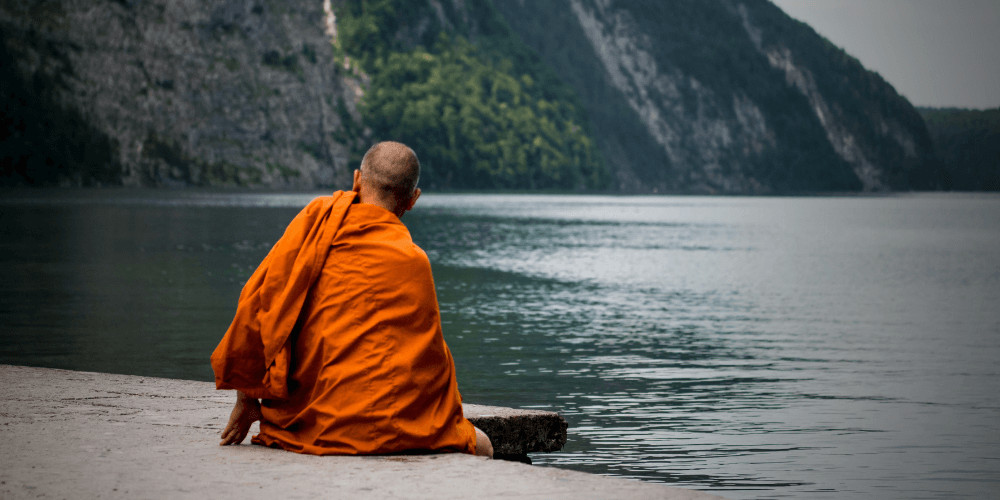
It is a commitment to keep silent, with no words, at most times, embodying a unique communication characteristic. And while many people in the United States and other parts of the Westernized world believe that silence is always synonymous with monasticism, no large monastery orders practice it thoroughly.
Also, the most devoutly quiet orders, such as the Carthusians, still arrange a time for conversation.
Some have recently taken up the vow of silence in modern cultures to protest or deepen their faith. Many regard a Vow of Silence as something essential for increasing one’s relationship with God, delving day deep into spiritual introspection.
In certain traditions, it is also considered an ethical practice.
Origin of the Vow of Silence
The Great Vow of Silence is a period in Western Christian traditions amongst Lutheranism and Roman Catholicism monks and orders that begins at the biblical hour of Compline (night prayer) and lasts until the first office of the next day, Lauds (morning prayer).
In addition, many monasteries have specific scheduled hours dedicated to the monks vow of silence (work silence, prayer periods, etc.) and places (chapel, refectory, etc.) where expression, unless strictly required, is banned.
Related>>> Emily Fletcher Meditation
Also Read>>> Meditation for Busy People
The Vow of Silence is known as Mauna in Indian religions, and the word Muni (for example, Sakyamuni) means “silent one.”
In novice preparation, taking a vow of silence is often discussed as one of many things to avoid the allures of Samsara.
The Vow of Silence gives voice to child poverty
Many people believe taking a Vow of Silence is an important way to bring about change. They believe that, by speaking with silence, their message will be heard loud and clear.
For example, in Cambridge, ON, Canada, Silver Heights Public School students took a pledge of silence to ensure needy children worldwide have a say.
They also agreed to become members of the Free the Children organization’s vow of a silent field advocacy program, which seeks to raise consciousness about the impact of hunger, conflict, and injustice on children.
Money generated goes to Free the Children’s sustainable development services, including schools in some of the poorest countries with alternative income for campaigns, health care, and safe water and sanitation.
Why do People Take a Vow of Silence?
Not all people are called to be a hermit, but the fact is, all human beings benefit from some moments of peace in their life to relax the mind and nervous system enough to hear the deep inner voice of their true selves at least once in a while.
Both Eastern and Western monastic practices, including those of Tibetan monks, have used the promise of silence to help practitioners maintain greater mental peace.
It appears to be a successful type of meditation because as practitioners quiet the noise of speech and thoughts, they are not only speaking with silence but stopping the inner voice becomes much more straightforward.
Talking necessitates the expression of our feelings and thoughts in phrases.
If we make a sincere promise to avoid speaking words, we find it simpler to still the habitual thinking or mind noise, which is one way we may interrupt our meditation practice of quieting the mind.
John Francis experienced a vow of silence for 17 years
“After 17 years of not speaking, I know the importance of there being someone there to hear what you have to say.”
Francis discovered that people are just as much a part of the ecosystem as their nature. To him, we are part of the world that expanded beyond animal extinction, environmental destruction, and waste to encompass humans and how we support one another.
He claims that no one mentions it when we discuss ‘the world.’ As a result, he felt that he wanted to speak out on human rights, civil rights, and racial equity.
During his pledge of silence, he also managed to finish school and earn a Ph.D. He claims it dawned on him that he might live the remainder of his life without thinking.
Our first chance to support the earth’s sustainability, or even find out what we think when we speak of sustainability, was how we treated each other. This complicated journey of silence and speech reveals profound insights into our interconnectedness.
He knows what it means to speak with silence: after 17 years of the Vow of Silence, he understands the value of having others listen to what you have to tell.
Even if it leaves one uncomfortable, the therapeutic effects of quiet time will lead to a more purposeful life
- Silence can enhance mental clarity and raise self-awareness.
- Compassion for yourself and others.
- Learn Analysis and decision-making skills.
- Become more conscious and caring about yourself.
- The Vow of Silence is essential for spiritual development in Buddhism. To put it simply, it allows you to be present within yourself. Your emotions will communicate if you don’t act like a control freak and constantly react to them with judgment. As a result, you’ll get a better understanding of yourself. In spirituality, it is a miracle and, without a doubt, a connection between quiet and inner peace.
All meditation activities aim to put the peace of mind gained by meditation into the moment-to-moment reality of daily life.
Keeping this promise of inward reflection of taking a vow of silence when “sitting, standing, walking, and lying down” becomes second nature, enabling one to dwell in the calm of Being, even if our circumstances do not compel us to do so.
Like many allied meditation methods, the inner vow of silence maintains a spontaneous, enlivened mind that reacts to situations with humility and knowledge.
How to Practice Taking a Vow of Silence?
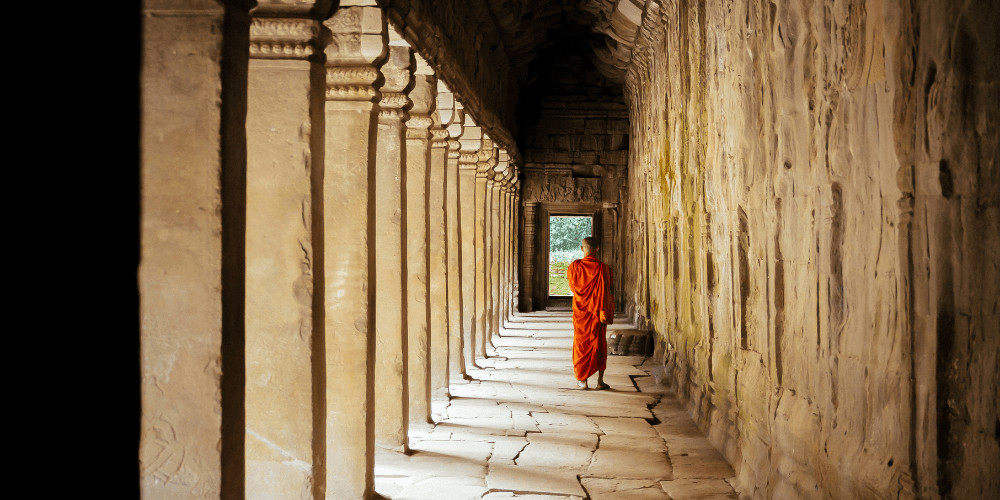
Since communicating with our human friends is essential to our lives as social beings, much of our conscious upbringing focuses on speech and language learning.
It’s easy to overlook how important it was for us to learn to name objects and imitate the voice of those nearest to us, but very little about how to be in silence as a child.
Because our social identification determines much of our learned sense of self, it’s easy to overlook the initial understanding of the self, with all of its promises, that existed until people learned to think in some words.
In this inevitable scenario, people don’t have to avoid some words and listen to others to stop the speech to themselves and return to the primary sense of Being, thankfully.
All that is required is that each meditation session begins with this step.
You take a sincere vow of silence, not because you wish to break the habit of thoughts emerging in the first step, but because it is beneficial and successful to cut them short before they get out of hand.
Bring Vow of Silence to your life
Answer each thought by telling yourself, “I’m maintaining my vow of silence.”
Instead of chasing the same old ideas to the same old assumptions, we should use this essential tactic to return to Witness consciousness and quiet the habit.
I’m holding my vow of silence, and the idea that still is the Thinking mind and brings one back to the presence of Being is “I’m keeping my vow of silence.”
It’s a realistic implementation of Zen Master Dogen’s advice to “Think Not.”
Use yoga to bring silence to your life. Yoga is about stillness, the mind-body bond, and the rhythm of existence when you go into each pose.
It’s more about the entire thing. From the moment you decide to start your practice until you finish your Savasana and beyond, you are engaging in a scenario where silence and mindfulness are central.
Pick a time to begin.
Pick and note down when you want to begin the silence of observation.
Stop communications and all forms of contact at this moment, including eliminating the internet and other non-verbal forms of communication.
You’ll be able to chart your practice progress using the times you set aside for reflection.
As a result, you’ll be able to see a sign of whether you’re on track or not.
Select an Appropriate Location
It is preferable to maintain silence in a relaxed atmosphere. Just as a monastery is a nurturing place for a monk’s vow of silence, having a quiet place to settle into is particularly critical for a novice. In general, a peaceful environment leads to less distraction and more focus.
You can create your retreat setting at home.
Avoid being around any technology devices to eliminate distractions of social media and other notifications.
When taking a pledge of silence, you are not required to sit still. As a result, you should be able to get on with your physical activity without having to talk.
The quiet position aims to eliminate things that might cause you to lose concentration. Alternatively, when we can’t focus on speaking with silence, it will only increase the need to speak.
Related>>> Ziva Meditation
Keep a close eye on your thoughts
You’ll need to engage in some self-reflection in this situation. Stay in your head to observe how you perceive and feel.
There may be someone with whom you feel compelled to speak. And the need to converse with the person is growing.
It’s also possible that you’re one of those people who can’t seem to quit chatting. In other words, they believe that everyone should listen to them.
Alternatively, they might feel compelled to prove one claim or the other.
In any situation, keep a close eye on your feelings so that you can comprehend the operation of your machine.
Both of these are impulses that you must regulate.
However, it can seem nearly impossible at first.
For instance, the body is oblivious to the work you’re putting it through. As a consequence, it makes an effort to oppose it.
Also Read>>> The Silence of the Min
As a result, annoyance and discomfort can occur.
But don’t try to go against your instincts. If the situation is attempting to frustrate your efforts, you should take deep breaths.
Remember that you are just supposed to watch and not to mess.
Make an effort to develop your inner silence
While a vow of silence prevents authentic expression, it often prevents the subconscious from speaking. You don’t have to push your mind to be still. Avoiding contact with others would ultimately result in a calmer mind.
That said, you may use specific meditation exercises to help you out at this stage. For example, you can relax your inner chatter by repeating a mantra.
It would be best to practice mindfulness by refocusing in a peaceful setting because this will assist you with achieving mental peace.
Converting a lot of harmful energies through a good mood is another meditation practice. Both of these things will contribute to inner harmony.
As a result, you may have a more positive attitude about your journey.
Develop Your Skills by Practicing
You must give yourself credit for how painful your first attempt at a vow of silence will be. Many first-time practitioners can be in denial about how difficult being silent is, which is why you must mentally brace yourself.
Otherwise, you will be inviting yourself into an internal conflict. Even a monk’s vow of silence is difficult the first time.
Remember that the goal isn’t to struggle but to reconnect with your Being.
Allow yourself to develop in this process. Learning to speak with silence is a daily practice, and, as a result, realize that daily practice will lead you to the natural peace you desire.
Furthermore, a single approach is insufficient to achieve the desired effect, which is prevalent in all aspects of life.
As a result, I put in the time and effort to train.
All of the frustrating emotions will go away with time, giving way to calm. Subsequently, you will notice that your thoughts are free to flow.
Most importantly, there will be no feelings or anything added to the reflections.
Then you’ll understand how to listen more effectively.
Your mindfulness would also change. When the time comes for you to speak, you will deliver a well-planned message.
Common Questions About Taking a Vow of Silence
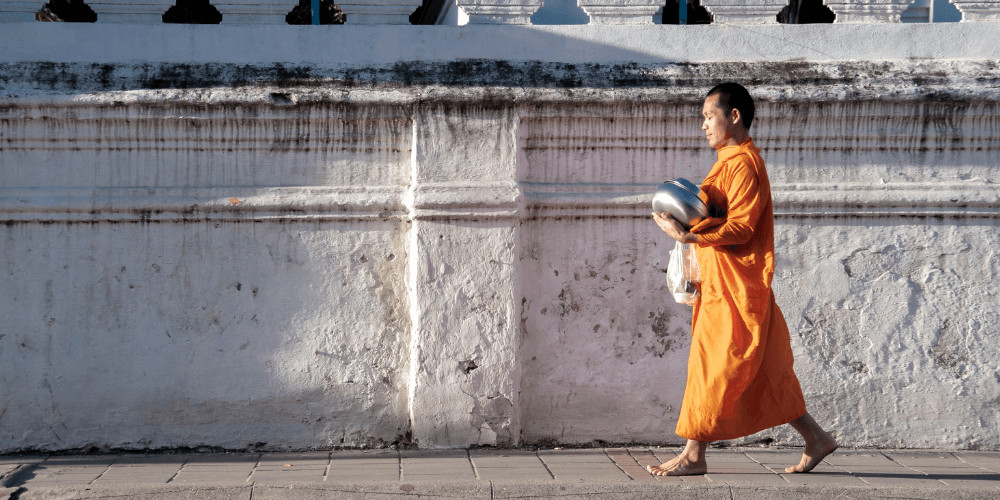
People are questioning what it means to take a Vow of Silence more and more. As a result, you may like to know whether you can write during the silence.
What happens when people are silent in this practice?
Often, what exactly is the point of taking a vow of silence? You can find more information about experiencing the vow of silence here by Vanessa van Edwards.
Can you write during the silence?
Being introspective and not concentrating on what you’re supposed to say is one of the most vital aspects of the vow of silence.
We are learning to speak with silence, however, it defeats the purpose if you can simply write out your response.
As you’re frantically writing notes to others, you might spend much less time listening or being present.
What happens when people are silent?
If you stick with your promise, you will experience incredible things in peace at any stage. It isn’t exactly a pleasure, but there is a sense of contentment.
It’s as if the subconscious suddenly realizes that you’re there to listen.
Finally, the chatter in your head will stop, and what you’ll be doing is listening.
Why do monks take a vow of silence?
In the Buddhist tradition, a monk’s vow of silence is a way to practice proper speech. Monks feel that they would avoid saying something negative by avoiding revealing anything that comes to mind.
For them, speaking with silence is a way to practice nonviolence.
Consequently, the monks would be able to choose the most appropriate vocabulary at any given time. They cannot use any sign or sign language to communicate with each other.
How can I be quiet for a day?
Unlike a monk’s vow of silence, you aren’t limited to what’s in a monastery.
For example, you might take out one of your favorite books and read a few excerpts to change your word mindset when you feel like you can’t get through the day without speaking.
Play some songs. If you love music, listening to it will help you escape your solitude.
While staying still, you should engage in constructive activities such as meditation. Although not all signs of meditation are quiet, a large number of them are.
Techniques for silent meditation will help you focus on yourself, calm your mind, and pass the time. Inhale and exhale slowly and deeply.
Speaking is a gift
The vow of silence shows us that both silence and speaking are blessings and sometimes go hand in hand. Being willing to articulate oneself verbally is a blessing to yourself and everyone around you.
You listen to someone’s word as you avoid communicating, but you still depend on them to continue the discussion for you.
Every child should be taught the importance of silence in school. You can’t answer people’s questions, give them counsel, or help them if you don’t stop your thoughts or words from being silent.
Although listening to someone is a way to offer to them during your pledge, bear in mind that you are still pushing them out of their comfort zone.



